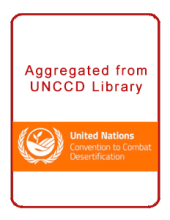Land Library Search
Through our robust search engine, you can search for any item of the over 73,000 highly curated resources in the Land Library.
If you would like to find an overview of what is possible, feel free to peruse the Search Guide.
/ library resources
Showing items 1 through 9 of 37.In 2013, the International Land Coalition (ILC) marked a historic expansion in its membership, reaching 152 member organisations in 56 countries, representing diverse interests and entities from national civil society organisations (CSOs) and grassroots movements to international non-governmental
Forests cover nearly one-third of the world’s land area. They provide vital environmental services such as soil and water protection, regulate the climate and preserve biodiversity, produce valuable raw materials and food, and sustain the livelihoods of millions of people.
Land degradation is increasingly recognised as global challenge and is even pushed for as candidate for a (post-2015) Sustainable Development Goal (SDG). The ‘quality of soil’ has been linked to the emergence of conflict, inter alia since it aggravates food and water scarcity.
This Topic Guide covers: the trends in and drivers of large-scale land acquisition, and the associated costs, risks and benefits; the provision of and access to more accurate data on large-scale land acquisitions, and key international and regional initiatives to provide guidelines to enhance sec
Across sub-Saharan Africa agriculture is the backbone of the economy, accounting for 30-40% of nations’ gross domestic product, and a leading source of jobs for over two-thirds of the population. Improving the
While nearly 80 percent of food consumed in sub-Saharan Africa and Asia is produced by smallholder farmers, the Bank negates the importance of small-scale farming for sustainable rural development and food security.
The first years of the twenty-first century will be remembered for a global land rush of nearly unprecedented scale.
Efficient land governance has long been recognized as a major driver of sustainable and equitable
development. Carried out effectively, it can enable us to address critical challenges such as those of climate
Land markets are evolving in response to increasing population pressure in Africa.
High population pressure leads to land use intensification on very small farms.
Population growth in densely populated rural areas leads to increasing rural–urban youth migration.


